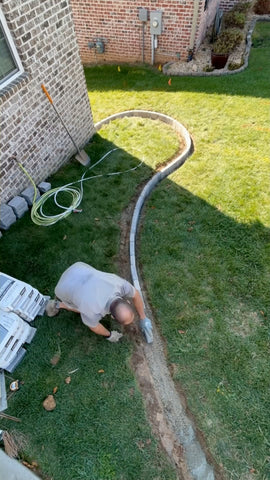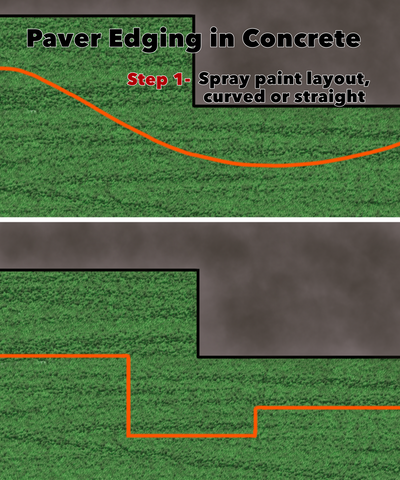6 Steps to Clean Sturdy Edging: A Guide to the Concrete and Paver Method
When it comes to enhancing your landscape's aesthetics and functionality, sturdy edging can make a significant difference. Concrete and paver edging not only provide structural support but also add a polished look to your outdoor space. If you're considering this method for your landscaping project, here's a comprehensive guide to help you through the process.
1. The Materials

Before diving into the project, gather all the necessary materials. For concrete mix, estimate around 60 pounds per 3 feet of paver edging length. Opt for regular premixed concrete, requiring only water for mixing. As for paver edger material, choose between straight and curved applications.
- Straight Applications: Use 6x9 inch pavers. Calculate the number needed by multiplying the total feet to be edged by 12, then divide by 9.
- Curved Applications: Combine 6x9 inch pavers with 3x6 inch ones for smoother curves. Calculate the quantities for each size using the same method as for straight applications.
2. Layout and Planning
Before you start digging, consider drainage and grading. Ensure that the edgers won't create a negative slope towards your house, and address any bumps or dips in the ground for a visually pleasing result. Use string lines for straight runs and mark spray paint for curved sections, adjusting until satisfied.
3. Digging the Trench
Dig an 8-inch wide trench that's 7 inches deep, tapering to 3 inches wide at the bottom.

4. Concrete Base
With proper protection, mix concrete in the trench. Spread a 2.5-inch layer of dry concrete in sections between 10 and 80 feet, adjusting the thickness to match the desired paver height. Wet the concrete, mix it well, then repeat the wetting process.
5. Setting the Paver Edgers
For straight runs, use string lines to set the desired finish height of the paver edger. Adjust as needed for slopes. For curved runs, rely on visual checks and ground guides like a piece of 2x4 to maintain consistent elevation. Leave gaps between paver edgers where water buildup is likely.

6. Finishing Touches
Once the paver edgers are set, place dry concrete halfway up the front and back, then wet and smooth it out with a trowel to create a slope away from the edgers. Finally, cover the concrete with a layer of topsoil for a seamless finish.
By following these six steps, you can achieve clean, sturdy edging using the concrete and paver method. Whether you're outlining flower beds, pathways, or garden beds, this technique adds both functionality and visual appeal to your landscape design. So roll up your sleeves, gather your materials, and get ready to reclaim your edges.


2 comments
I can’t speak from experience on any plant zone colder than 6b, but I have installed an lot of this edging in plant zone 6b and have some that is now 5+ years old and still doing great.
Does the concrete and paver border approach work in northern areas where the ground freezes during the winter?